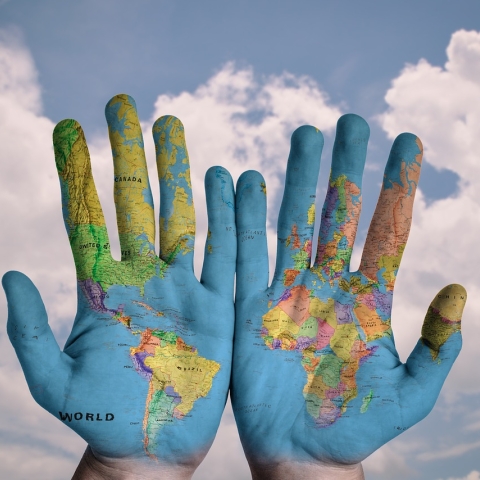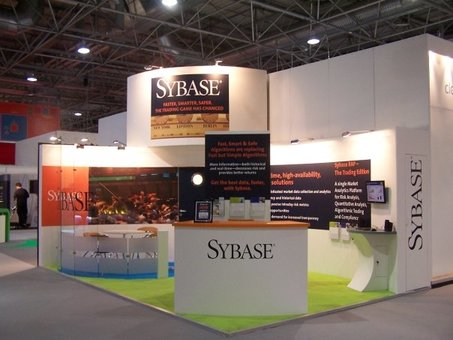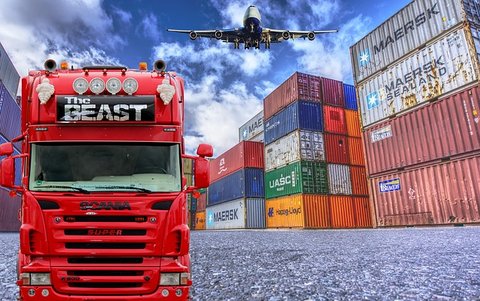Key Tips for Exhibiting Internationally

Exhibiting internationally is a big opportunity for many marketers looking for global awareness. But for even the most experienced trade show managers, exhibiting in another country can bring unexpected challenges.
Exhibitors can’t simply replicate what they’ve done in the United States. It’s important to understand the differences in meeting experiences in different countries and know the best strategies and tools to use to address these nuances.
There are three key areas to focus on to prepare for international exhibiting: exhibit stand space, construction and services; budget and logistics; and language and etiquette.
Physical Space and Booth Fabrication
There are stark differences in the way exhibit halls are executed in the United States and other countries.
GES senior strategic account executive Jennifer Carnahan says one difference is that outside of North America, there are more “build and burn” structures which are not reused after the event.
“The environment is different with labor,” she said. “You’ll see teams building exhibits onsite and there aren’t labor unions, so a lot of individual labor teams travel to the site.”
Jorge Mijares, director of creative services at Hargrove, points out that this onsite fabrication affects the utilization of certain materials and finishes.
“In the U.S., there’s heavy use of materials like laminate or pre-painted hard surfaces,” he said. “Internationally, exhibitors fabricate and set up exhibits onsite, bringing raw wood panels for hard surfaces, sanding them and painting them to create seamless surfaces.”

Carnahan recommends that exhibitors develop a relationship with a company that knows the market and can provide the services directly. There are many such third-party agencies that specialize in helping with booth design and build for U.S. exhibitors that can also manage all of the service orders.
Another difference is the floorplan itself. In the United States, it’s common to see rectangular exhibit spaces while in Europe, triangular spaces and spaces with differing heights are typical. Documentation of the event spaces is often not as thorough and detailed as U.S. exhibit managers have come to expect.
Shannon Bennett, VP sales and marketing at ADM Two Exhibits & Displays, highly recommends that exhibitors visit recurring shows in advance of exhibiting whenever possible.
“You can check out how your competitors exhibit, get to know the planners and get familiar with the international exhibiting environment in general,” she said.
“Planners should help exhibitors get access to the site so that they can bring contractors to do measurements,” Carnahan added.
Some events with a wide geographic distribution of exhibitors offer site visits as part of the exhibitor packages. Corporate Event News managing editor Danalynne Menegus referenced SIBOS, a large financial services event that holds its event in a different geographic region each year.
“I always attended the site visit when possible,” she said. “It was generally six or seven months before the event and provided a great opportunity to see the venue, get a feel for the space, and meet with my local vendors.”
If physically visiting the site isn’t possible due to travel or budget restrictions, more and more sites are now offering virtual floorplans. While not nearly as good as seeing the space in person, these can at least serve to provide a bit more detail on venue layouts.
Budget and Logistics
Planning cycles for international events are typically two years. If exhibitors are working in the local currency they can buy currency in advance to eliminate risk of currency fluctuations.
“They can also reclaim certain expenses such as catering or design work depending on where the budget is kept,” explained Carnahan.
The biggest difference will be shipping costs and complexity.
Mijares says when exhibiting domestically, shipping cost and time are big factors of the overall investment, but that is not necessarily the case for international exhibits.
“With international exhibits most of these costs disappear because the fabrication happens onsite; most elements don’t require crates to be shipped, the fabrication and set up occurs almost simultaneously, and the return shipping/storage costs are nonexistent since the booths are mostly discarded,” he said.
 However, when anything ships internationally, exhibitors need to allow extra time for policies in the local area and customs paperwork, which can be challenging.
However, when anything ships internationally, exhibitors need to allow extra time for policies in the local area and customs paperwork, which can be challenging.
Show services are another key area to look out for. Many of these services are handled differently internationally.
“You may have a total package for the various aspects of a booth — installation and dismantling, flooring and electric,” explained Bennett.
He added, “The price does not alter once all details are confirmed, while in the U.S., you have different areas of responsibility on who handles the different aspects of a booth and costs can adjust.”
“International fabricators utilize mainly their own in-house production staff, allowing them to use specialized labor at lower costs,” added Mijares.
Overlooking even the smallest of details can lead to disaster.
“What is the local power supply, does your destination country requires a visa, does your passport have to be valid for a certain time period before traveling, what are the available cell phone plans?” said Carnahan.
“These are all important questions to answer ahead of time. There’s not always a FedEx on every corner to get last minute services,” she added.
Menegus referenced a time where she almost missed a flight to Sydney, because she didn’t realize a visa was required.
“I’d had an Australian visa on my previous passport and didn’t realize that our travel agent hadn’t renewed it when that passport expired,” she said. “Luckily, I was able to pay a fee at the airport and do it there — but it was a good thing I was there early.”
Language and Etiquette
Even small differences in language can present challenges. For example, what Americans call an exhibit “booth” is known as a “stand” in the United Kingdom. And outside of the U.S., electricity is more likely to be in volts, not watts.
Booth visitors stop and engage longer and with better outcomes when exhibitors use their language. Ways to bridge the language gap include using local staff, hiring in-booth translators and providing brochures, documents and videos in multiple languages.
 “If you are exhibiting internationally, it's a mistake to assume that ‘English is the international language; we don't need to translate’”, said Chris Durban, past president of the French national translators’ association SFT and a Fellow of the UK translators association ITI.
“If you are exhibiting internationally, it's a mistake to assume that ‘English is the international language; we don't need to translate’”, said Chris Durban, past president of the French national translators’ association SFT and a Fellow of the UK translators association ITI.
He added, “Even though many of your targets claim to speak English they will be more comfortable with their own language.”
Durban advises exhibitors to hire a skilled, professional translator to translate materials.
“The budget is minimal compared with potential returns,” he said.
Bennett recommends that exhibitors do advance research on etiquette in the country they are visiting and consider cultural training for staff attending the show.
“Many aspects of communication, including body language, greetings and gestures may be very different from what we are used to, so it’s important to put your best foot forward to ensure you are being respectful and aware of cultural differences,” she said.
Both Bennett and Carnahan say that there is more focus on hospitality in Europe.
“It’s less about product details and more conversations,” Carnahan said. “You’ll see more one-on-one interactions than group sales.”
Bennett noted that in the United States, companies focus on demonstrations and quick discussions on products; whereas international attendees may spend an hour in the booth socializing and enjoying food and beverages provided by the exhibitor.
Trade show managers can also make lists to help themselves and their staff prepare.
“Include things like travel books to educate staff on cultural differences, cultural training, and a timeline for when items should be completed,” said Bennett.
In today’s global marketplace, exhibiting at events outside the United States is essential for many brands. Knowing what to expect when exhibiting in another country, and making sure your staff knows as well, will prepare you for success.


Add new comment